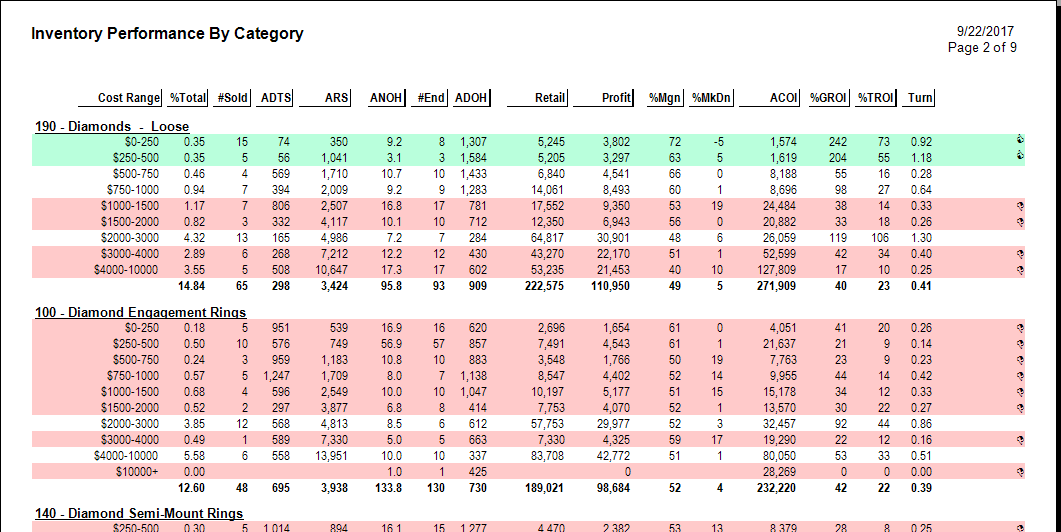

In the tabular version of the report, data fields include:
|
Category or Vendor |
The category or vendor by which the items are being grouped. This column type will vary depending on the type of report generated. | |
|
Cost Range |
Each category or vendor can be further broken down by price ranges. | |
|
% Total |
What percentage of total sales this category or vendor and price point accounts for. It is calculated based on the selling price. | |
|
# Sold |
The total number of items in that grouping sold. | |
|
ADTS |
Average days to sell. Of the items sold in this line, the number of days, on average, it took for them to sell. | |
|
ARS |
Average retail sale. | |
|
ANOH |
Average number on hand. | |
|
#End |
Number of items remaining on hand. | |
|
ADOH |
Average days in stock. Average number of days that unsold items are in inventory. | |
|
Retail |
The retail price of the items that sold. | |
|
Profit |
The net profit of the sales from that grouping. | |
|
% Margin |
The profit margin based on the items that sold. | |
|
% Mkdn |
The discount that was taken at point of sale marked down from retail. | |
|
ACOI |
The average value of inventory during the period. | |
|
GROI |
The gross return on investment for that grouping. If the value is above 150%, it will appear highlighted in green. | |
|
TROI |
The true return on investment for that grouping. This figure takes into account the full amount of time the item was in stock during the reporting period. | |
|
Turn |
Number of times that inventory investment turned at cost of goods sold. |
|